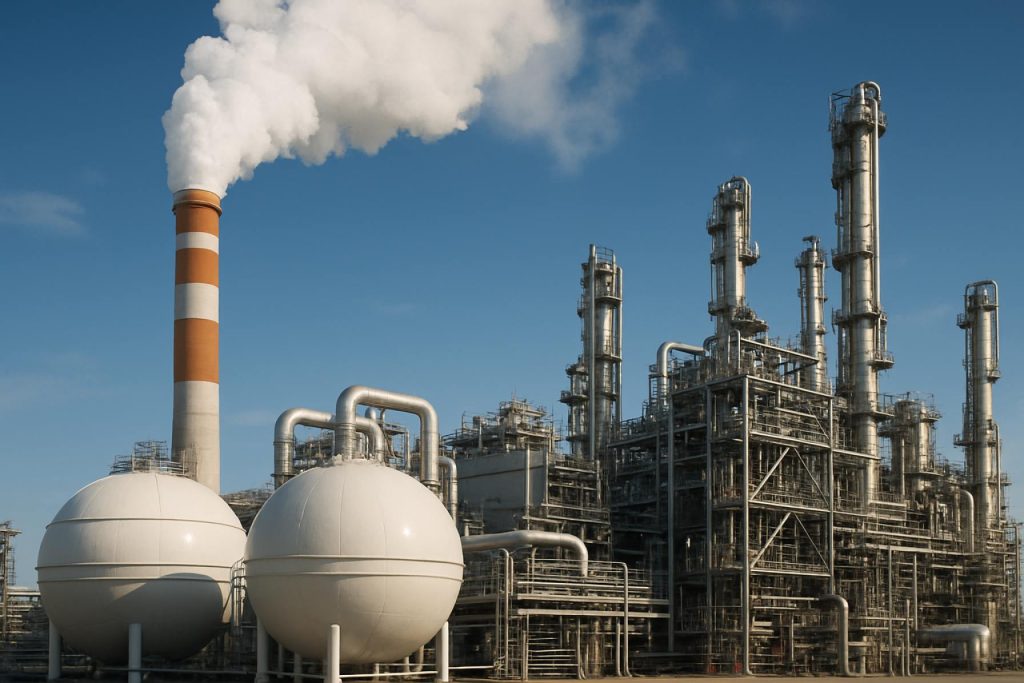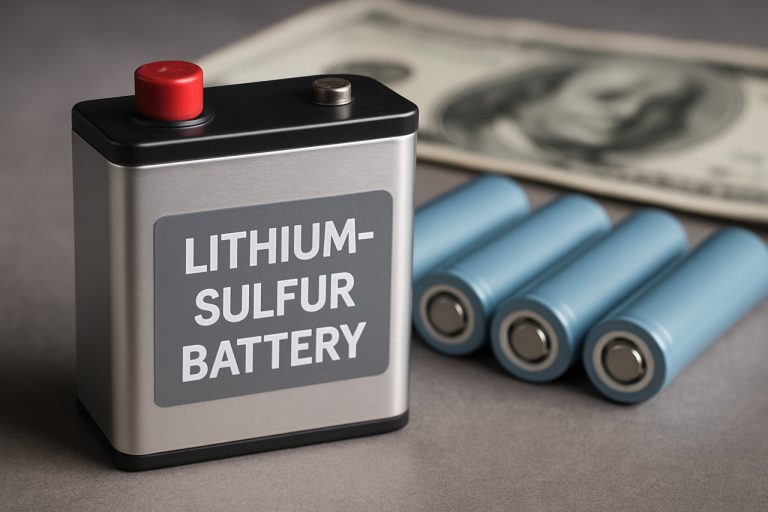
Oxyfuel Combustion Technology for Carbon Capture Market Report 2025: In-Depth Analysis of Growth Drivers, Regional Trends, and Competitive Dynamics. Explore Key Opportunities and Challenges Shaping the Industry’s Future.
- Executive Summary & Market Overview
- Key Technology Trends in Oxyfuel Combustion for Carbon Capture
- Competitive Landscape and Leading Players
- Market Growth Forecasts (2025–2030): CAGR, Revenue, and Volume Analysis
- Regional Market Analysis: North America, Europe, Asia-Pacific, and Rest of World
- Challenges, Risks, and Barriers to Adoption
- Opportunities and Strategic Recommendations
- Future Outlook: Innovations and Policy Impacts
- Sources & References
Executive Summary & Market Overview
Oxyfuel combustion technology is an advanced process designed to facilitate carbon capture by burning fuel in a mixture of pure oxygen and recycled flue gas, rather than air. This results in a flue gas that is primarily composed of CO2 and water vapor, significantly simplifying the capture and sequestration of carbon dioxide. As global decarbonization efforts intensify, oxyfuel combustion is gaining traction as a viable solution for reducing greenhouse gas emissions from power generation and industrial processes.
In 2025, the market for oxyfuel combustion technology is poised for robust growth, driven by tightening emissions regulations, increasing carbon pricing mechanisms, and the urgent need for scalable carbon capture solutions. According to the International Energy Agency, carbon capture, utilization, and storage (CCUS) technologies must play a critical role in achieving net-zero emissions targets, with oxyfuel combustion representing a key pathway for retrofitting existing fossil fuel-based assets.
Market activity is concentrated in regions with strong policy support and significant industrial emissions, notably Europe, North America, and parts of Asia-Pacific. The European Union’s Green Deal and the U.S. Inflation Reduction Act have both accelerated investment in CCUS infrastructure, including oxyfuel projects. For example, the Global CCS Institute reports a growing pipeline of demonstration and commercial-scale oxyfuel projects, particularly in the cement, steel, and power sectors.
- Market Size & Growth: The global market for oxyfuel combustion technology is projected to reach over $2.5 billion by 2025, with a compound annual growth rate (CAGR) exceeding 10% from 2022 to 2025, according to MarketsandMarkets.
- Key Drivers: Stricter emissions standards, government incentives, and the need for retrofitting existing plants are primary growth drivers.
- Challenges: High capital costs, oxygen production expenses, and integration complexities remain barriers to widespread adoption.
In summary, oxyfuel combustion technology is emerging as a cornerstone of the global carbon capture market in 2025, supported by policy momentum and industry demand for effective decarbonization solutions. Continued innovation and supportive regulatory frameworks will be essential to unlock its full market potential.
Key Technology Trends in Oxyfuel Combustion for Carbon Capture
Oxyfuel combustion technology is rapidly evolving as a cornerstone for carbon capture in power generation and industrial processes. This approach involves burning fuel in a mixture of pure oxygen and recycled flue gas, rather than air, resulting in a flue gas that is primarily composed of CO2 and water vapor. This composition significantly simplifies the downstream carbon capture process, making oxyfuel combustion a promising pathway for achieving deep decarbonization targets.
In 2025, several key technology trends are shaping the development and deployment of oxyfuel combustion for carbon capture:
- Advanced Oxygen Production: The cost and energy intensity of oxygen production remain critical challenges. Recent advancements in air separation units (ASUs), particularly the adoption of ion transport membranes and cryogenic distillation improvements, are reducing operational costs and energy consumption. Companies such as Air Liquide and Linde are leading efforts to commercialize next-generation ASUs tailored for large-scale oxyfuel applications.
- Boiler and Burner Optimization: Retrofitting existing boilers for oxyfuel combustion requires significant modifications to handle higher flame temperatures and altered heat transfer characteristics. Innovations in burner design, such as staged combustion and advanced materials, are enabling more efficient and flexible operation. GE Vernova and Mitsubishi Heavy Industries are actively developing oxyfuel-compatible boiler technologies for both new builds and retrofits.
- Flue Gas Recycling and Heat Integration: Efficient recycling of flue gas is essential to control combustion temperatures and improve overall plant efficiency. Integrated heat recovery systems are being deployed to capture waste heat from flue gases, further enhancing the energy balance of oxyfuel plants. Recent pilot projects in Europe, such as those supported by International Energy Agency (IEA) initiatives, demonstrate the viability of these integrated systems.
- Scale-Up and Demonstration Projects: Large-scale demonstration projects are critical for validating oxyfuel combustion at commercial scale. The Drax Group in the UK and RWE in Germany are among the utilities piloting oxyfuel retrofits in coal and biomass power plants, providing valuable operational data and de-risking future investments.
These technology trends are converging to make oxyfuel combustion an increasingly viable and cost-effective solution for carbon capture, with the potential to play a pivotal role in global decarbonization strategies by 2025 and beyond.
Competitive Landscape and Leading Players
The competitive landscape for oxyfuel combustion technology in carbon capture is characterized by a mix of established energy conglomerates, specialized technology providers, and emerging innovators. As of 2025, the market is witnessing increased activity due to tightening global emissions regulations and the growing adoption of carbon capture, utilization, and storage (CCUS) strategies, particularly in hard-to-abate sectors such as cement, steel, and power generation.
Leading players in this space include Air Liquide, Linde plc, and Air Products and Chemicals, Inc., all of which have developed proprietary oxyfuel combustion systems and integrated carbon capture solutions. These companies leverage their expertise in industrial gases and process engineering to offer turnkey solutions for retrofitting existing plants or building new facilities with oxyfuel capabilities.
In the power generation sector, GE Vernova and Siemens Energy are notable for their research and pilot projects focused on oxyfuel combustion in coal and gas-fired power plants. Their efforts are often supported by collaborations with research institutions and government-backed initiatives, such as the European Union’s Horizon Europe program, which funds demonstration projects and technology scale-up.
Emerging technology providers, such as Carbon Clean and Cemvita Factory, are gaining traction by offering modular and cost-effective oxyfuel solutions tailored for industrial applications. These companies focus on reducing the energy penalty and operational costs associated with oxyfuel combustion, making the technology more accessible for mid-sized industrial emitters.
The competitive dynamics are further shaped by strategic partnerships and joint ventures. For example, Air Liquide has partnered with TotalEnergies and Aramco to deploy large-scale oxyfuel carbon capture projects in Europe and the Middle East. Such collaborations aim to accelerate commercialization and share the financial risks associated with first-of-a-kind deployments.
Overall, the market is expected to consolidate as technology matures and regulatory frameworks become more stringent. Leading players are investing heavily in R&D, pilot projects, and cross-sector alliances to maintain their competitive edge and capture a larger share of the growing carbon capture market in 2025 and beyond.
Market Growth Forecasts (2025–2030): CAGR, Revenue, and Volume Analysis
The global market for oxyfuel combustion technology for carbon capture is poised for significant growth in 2025, driven by tightening emissions regulations, increased investment in decarbonization, and the scaling of carbon capture, utilization, and storage (CCUS) projects. Oxyfuel combustion, which involves burning fuel in pure oxygen rather than air, produces a flue gas that is highly concentrated in CO2, simplifying the capture process and reducing the cost per ton of CO2 sequestered.
According to projections by MarketsandMarkets, the global carbon capture, utilization, and storage market is expected to grow at a compound annual growth rate (CAGR) of approximately 13% from 2023 to 2030. Within this broader market, oxyfuel combustion is anticipated to be one of the fastest-growing segments due to its compatibility with retrofitting existing coal and gas-fired power plants and its ability to deliver high-purity CO2 streams for sequestration or utilization.
In 2025, the revenue generated by oxyfuel combustion technology for carbon capture is forecasted to reach between USD 1.2 billion and USD 1.5 billion globally, representing a robust year-on-year increase. This growth is underpinned by large-scale demonstration projects in Europe, North America, and Asia-Pacific, as well as supportive policy frameworks such as the EU Innovation Fund and the U.S. Inflation Reduction Act, which provide incentives for CCUS deployment (International Energy Agency).
Volume-wise, the installed capacity of oxyfuel-based carbon capture systems is expected to surpass 10 million tonnes of CO2 captured annually by the end of 2025, up from an estimated 6 million tonnes in 2023. This expansion is driven by both new-build projects and retrofits of existing industrial and power generation facilities (Global CCS Institute).
- CAGR (2025–2030): Projected at 13–15% for oxyfuel combustion technology within the CCUS sector.
- Revenue (2025): Estimated at USD 1.2–1.5 billion globally.
- Volume (2025): Over 10 million tonnes of CO2 captured annually via oxyfuel systems.
These forecasts underscore the accelerating adoption of oxyfuel combustion as a key enabler of industrial decarbonization and a critical component of global efforts to achieve net-zero emissions targets.
Regional Market Analysis: North America, Europe, Asia-Pacific, and Rest of World
The regional market analysis for oxyfuel combustion technology for carbon capture in 2025 reveals distinct trends and growth drivers across North America, Europe, Asia-Pacific, and the Rest of the World. Each region’s adoption is shaped by regulatory frameworks, industrial demand, and investment in decarbonization technologies.
- North America: The United States and Canada are at the forefront of oxyfuel combustion deployment, driven by stringent emissions regulations and significant government funding for carbon capture, utilization, and storage (CCUS) projects. The U.S. Department of Energy’s Carbon Capture Program and the 45Q tax credit have accelerated pilot and commercial-scale projects, particularly in the power generation and cement sectors. According to the International Energy Agency, North America accounts for a substantial share of global CCUS capacity, with oxyfuel technology being piloted in both retrofits and new builds.
- Europe: Europe’s market is propelled by the European Union’s Green Deal and the Emissions Trading System (ETS), which impose strict carbon pricing and reduction targets. Countries like the UK, Germany, and the Netherlands are investing in large-scale demonstration projects, such as the Calix LEILAC project and the UK’s Drax BECCS initiative. The European Commission has allocated substantial funding through the Innovation Fund, supporting the integration of oxyfuel combustion in hard-to-abate industries.
- Asia-Pacific: Rapid industrialization and coal dependency in China, India, and Japan create a significant market for oxyfuel combustion technology. China’s 2060 carbon neutrality pledge and Japan’s Green Growth Strategy are catalyzing investments in CCUS infrastructure. The Global CCS Institute notes that Asia-Pacific is witnessing a surge in pilot projects, with China leading in oxyfuel-based retrofits for coal-fired power plants and cement kilns.
- Rest of World: Adoption in Latin America, the Middle East, and Africa remains nascent but is expected to grow as international climate finance and technology transfer initiatives expand. The World Bank and multilateral development banks are supporting feasibility studies and early-stage projects, particularly in oil and gas-rich regions seeking to decarbonize their energy sectors.
Overall, while Europe and North America lead in policy-driven deployment, Asia-Pacific’s industrial scale and emerging government commitments position it as a key growth market for oxyfuel combustion technology in 2025 and beyond.
Challenges, Risks, and Barriers to Adoption
Oxyfuel combustion technology, a promising approach for carbon capture in power generation and industrial processes, faces several significant challenges, risks, and barriers to widespread adoption as of 2025. While the technology offers the potential for near-pure CO2 streams suitable for sequestration, its deployment is hindered by technical, economic, and regulatory factors.
- High Capital and Operational Costs: The retrofitting of existing plants or construction of new facilities with oxyfuel combustion systems requires substantial investment. The need for air separation units (ASUs) to supply pure oxygen significantly increases both capital expenditure and ongoing energy consumption, impacting overall plant efficiency and cost-effectiveness. According to the International Energy Agency, oxyfuel systems can increase the cost of electricity generation by 50% or more compared to conventional plants.
- Technical Complexity and Integration: Integrating oxyfuel combustion into existing infrastructure presents engineering challenges, particularly in managing high flame temperatures and material compatibility. The process also generates flue gases with high moisture content, necessitating advanced gas cleaning and drying systems. These technical hurdles can lead to increased downtime and maintenance requirements, as highlighted by Global CCS Institute reports.
- Oxygen Supply and Energy Penalty: The production of pure oxygen via cryogenic air separation is energy-intensive, accounting for up to 15% of a plant’s total energy output. This “energy penalty” reduces the net efficiency of power plants, making oxyfuel combustion less attractive compared to other carbon capture methods, as noted by the International Energy Agency.
- CO2 Purity and Byproduct Management: Achieving the required CO2 purity for transport and storage can be challenging due to impurities such as SOx, NOx, and water vapor. Additional purification steps increase complexity and cost, as detailed in Global CCS Institute analyses.
- Regulatory and Policy Uncertainty: The lack of clear, long-term policy frameworks and incentives for carbon capture and storage (CCS) projects creates investment risk. Uncertainty around carbon pricing, storage liability, and permitting processes further deters large-scale deployment, as emphasized by the International Energy Agency.
In summary, while oxyfuel combustion technology holds promise for deep decarbonization, overcoming these multifaceted challenges is essential for its commercial viability and broader adoption in 2025 and beyond.
Opportunities and Strategic Recommendations
The market for oxyfuel combustion technology in carbon capture is poised for significant growth in 2025, driven by tightening emissions regulations, increasing carbon pricing, and the global push toward net-zero targets. Oxyfuel combustion, which involves burning fuel in pure oxygen rather than air, produces a flue gas with a high concentration of CO2, simplifying the capture process and reducing downstream separation costs. This technological advantage positions oxyfuel systems as a strategic solution for both retrofitting existing fossil fuel power plants and integrating into new-build facilities.
Key opportunities in 2025 include:
- Retrofitting Existing Infrastructure: Many coal- and gas-fired power plants in Europe, North America, and Asia are approaching regulatory deadlines for emissions reductions. Oxyfuel retrofits offer a pathway to extend asset lifespans while meeting stricter CO2 limits, as highlighted by International Energy Agency analyses.
- Integration with Industrial Processes: Hard-to-abate sectors such as cement, steel, and chemicals are increasingly exploring oxyfuel combustion to decarbonize operations. The high-purity CO2 stream is particularly valuable for these industries, as noted by Global CCS Institute.
- Synergies with Hydrogen Production: Oxyfuel combustion can be paired with hydrogen production (via gasification or reforming) to create low-carbon hydrogen, opening new revenue streams and supporting the hydrogen economy, as discussed by International Energy Agency.
- Government Incentives and Funding: The U.S. Inflation Reduction Act, EU Innovation Fund, and similar policies in Asia-Pacific are providing unprecedented financial support for carbon capture projects, including oxyfuel pilots and demonstrations (U.S. Department of Energy).
Strategic recommendations for stakeholders include:
- Forming Public-Private Partnerships: Collaborate with governments and research institutions to access funding, share risk, and accelerate technology validation.
- Investing in Modular and Scalable Solutions: Develop modular oxyfuel systems to reduce capital costs and enable phased deployment, particularly in emerging markets.
- Focusing on Integration and Flexibility: Design oxyfuel systems that can be integrated with renewable energy sources and energy storage to enhance grid flexibility and resilience.
- Prioritizing Lifecycle Emissions Reductions: Quantify and communicate the full lifecycle emissions benefits of oxyfuel technology to attract ESG-focused investors and customers.
In summary, 2025 presents a pivotal year for oxyfuel combustion technology in carbon capture, with robust opportunities for market expansion and strategic positioning across power and industrial sectors.
Future Outlook: Innovations and Policy Impacts
Looking ahead to 2025, the future outlook for oxyfuel combustion technology in carbon capture is shaped by a convergence of technological innovation and evolving policy frameworks. Oxyfuel combustion, which involves burning fuel in pure oxygen rather than air, produces a flue gas that is primarily water vapor and CO2, simplifying the capture process. This technology is gaining traction as industries and governments intensify efforts to meet ambitious decarbonization targets.
On the innovation front, significant advancements are expected in oxygen production methods, which currently represent a major cost and energy barrier for oxyfuel systems. Companies and research institutions are investing in next-generation air separation units (ASUs) and membrane-based oxygen generation, aiming to reduce operational costs and improve energy efficiency. For example, the deployment of ion transport membranes and advanced cryogenic techniques is projected to lower the energy penalty associated with oxygen supply, making oxyfuel combustion more commercially viable by 2025 International Energy Agency.
Integration with renewable energy sources is another area of innovation. Hybrid systems that utilize surplus renewable electricity for oxygen production or for powering carbon capture units are being piloted, potentially reducing the carbon footprint and operational costs of oxyfuel plants. Additionally, digitalization and process optimization, including the use of AI-driven control systems, are expected to enhance plant efficiency and reliability Global CCS Institute.
Policy impacts will be equally pivotal in shaping the market landscape. In 2025, regulatory frameworks in key regions such as the European Union, United States, and China are anticipated to further incentivize carbon capture deployment through carbon pricing, tax credits, and direct funding for demonstration projects. The EU’s Carbon Border Adjustment Mechanism and the U.S. Inflation Reduction Act’s expanded 45Q tax credits are examples of policy levers that could accelerate investment in oxyfuel combustion projects European Commission, U.S. Department of Energy.
In summary, by 2025, the future of oxyfuel combustion technology for carbon capture will be defined by breakthroughs in oxygen production, integration with renewables, and supportive policy measures. These factors are expected to drive down costs, improve scalability, and position oxyfuel combustion as a key enabler of industrial decarbonization.
Sources & References
- International Energy Agency
- Global CCS Institute
- MarketsandMarkets
- Air Liquide
- Linde
- GE Vernova
- Mitsubishi Heavy Industries
- Siemens Energy
- Carbon Clean
- Cemvita Factory
- TotalEnergies
- European Commission
- World Bank



